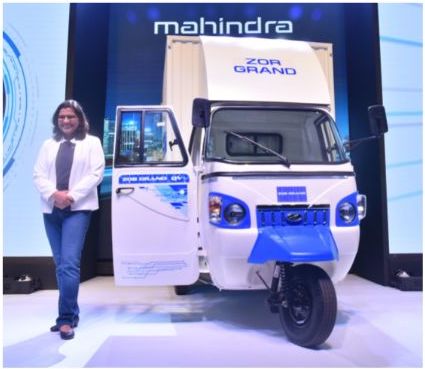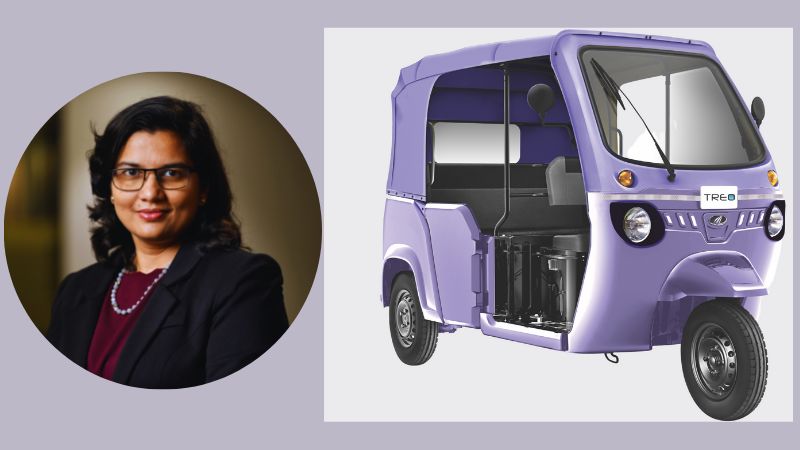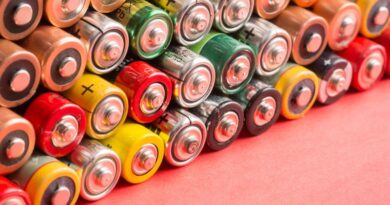Last mile connectivity in India and Mahindra LMM’s investment plans

In this exclusive interaction with EVreporter, Suman Mishra – CEO of Mahindra Last Mile Mobility (LMM), shares her perspective on India’s last-mile mobility space, the scope of electrification as well as the opportunities and challenges this segment presents.
What are the current challenges in India’s last-mile mobility space?
I would like to anchor this by saying that last-mile mobility affords public convenience for shared mobility. For individuals who do not have their own personal transport, it is the cheapest way to commute in India today. Therefore, this category is important for the community at large.
The focus for our company is on electrification of the last mile connectivity. The main challenge in the electrification of last-mile vehicles, i.e., the three-wheelers and the small four-wheeler commercial vehicles, is financing. Having said that, we have made a lot of progress, EV penetration in this segment was around 4% last year, which is now around 8%. The segment is growing on its own, but the required impetus can be provided through better financing instruments. The other issue we need to solve is EV charging access in dense urban clusters where there is minimum parking space.
What is driving the EV penetration for cargo fleets?
Fleet electrification is significantly higher than passenger segment electrification today, and that is really driven by the economic advantage. An electric vehicle today provides a better total cost of ownership (TCO), i.e., more savings per kilometre or per kg per type of operation as compared to an equivalent ICE vehicle.
From a cargo perspective, the vehicles are owned by fleet operators who have parking spaces and provide charging facilities. The big aggregators, like e-commerce companies, are really pushing electrification and have taken a very strong stance to include electric vehicles in their delivery fleets. Therefore, we are seeing a very significant increase in the electrification of cargo vehicles.
The passenger segment electrification will evolve as better financing options become available.

What is your outlook on battery swapping for electric three-wheelers?
There is a fit-to-purpose application in India for every kind of problem.
Swapping becomes viable for cases where the route and delivery timeframes are fixed, and swapping stations can be set up along the route accordingly. For cases where the vehicles generally travel over a larger area without any clarity of particular routes, swapping is not the right solution.
My general view is that the choice between the fixed battery and swapping solutions requires an application-centric approach. As a company, we are very big on the fixed battery application. But we have also made a partnership announcement with Jio-bP, whereby we are developing the swapping solutions for places where they are appropriate.
Is the future of last-mile mobility truly electric, or do you reckon we will see different power trains, maybe flex-fuel vehicles going forward?
I firmly believe that the future is electric. The projections are varied, but we estimate 30% EV penetration in the next 2-3 years and 50% electrification by 2030 in the last mile segment. This means that 50% of the vehicles will be non-electric. Both technologies (ICE and EV) will continue to co-exist for a period of time.
However, given the government impetus on our fuel dependence as a country, savings on a per-kilometre basis, and the superior ride experience – I do believe battery electric technology is expected to grow and dominate in the future. Flex-fuel is a bit harder because the cost dynamics don’t really sit very well for this category of vehicles.
What are your thoughts on the potential for EVs in the LCV Space?
This is, again, an important opportunity for electrification. As you know, Mahindra Last Mile Mobility operates in the sub-2 tonne space with Jeeto range of vehicles which are currently based on internal combustion engine.
The adoption of EVs in this category has to be TCO-led. There has to be a certain minimum distance coverage to justify the TCO. However, the cost parity for this category will be quite different as compared to three-wheelers. There is a gap in the cost structure, which means that better financing and leasing options will be the way this category will start to electrify.
I do think LCV space will see significant electrification in the time to come. Maybe a little slower than the three-wheelers, but definitely faster than the cars.
Mahindra LMM recently made an announcement to invest INR 1,000 Crores in Telangana to expand the company’s Zaheerabad manufacturing facility. Please tell us more about your plans.
This investment is planned for a five-year horizon. We will be manufacturing our existing electric products as well as the new range, including the LCVs from that facility.
Telangana is core to our strategy. We already make a lot of our diesel vehicles, including Jeeto 4W and Zor Grand EVs, there. Much of our Alfa range also comes from the Zaheerabad facility. So given the infrastructure and the location, it will be suitable for us to scale up this plant. We looked at all the possible manufacturing locations and have chosen Zaheerabad as the place where we will put our future investment, given the ecosystem and infrastructure.
Can you talk about your export outlook specifically for the electric three-wheelers?
We have started exporting electric three-wheelers, but it’s very early days. We are exporting to the UK and Nepal. We have agreements with Sri Lanka, Brazil, Japan, etc.
Export scale-up will depend on country-level policies. It is an equation between fuel and the policy of the destination country. As they come up with suitable policies, we’ll be happy to scale up our exports.
India is the largest manufacturer of three-wheelers, with almost 50% of the volumes getting exported. So we hope that over a period of time, we’ll electrify the exports as required.
Many financiers are hesitant to finance EVs as they have not seen the complete product life cycle yet and are unsure of the residual value of the product. What is Mahindra doing to allay all these fears?
Every new technology will come with some risks. We are currently working with a variety of players to try and figure out the second life applications and establish a value to the battery to solve financing. Plus, the real-world experience is that ICE and EVs have the same level of default, so there is no additional risk in financing EVs.
There are some new-age financiers who are also coming in with better offerings. I have to say, though, while financing is a challenge, the situation is far better than it was a couple of years ago when there were hardly any financiers in the market. This is one of those issues that gets resolved as the industry matures.
As a group, what is your vision for sustainability?
As a group, Mahindra and Mahindra Group has sustainability targets for 2040, and Last Mile Mobility is a key part of that aspiration. ESG is one of the big pillars of our future strategy, and we are quite committed to doing what it takes to get there, including the investments we just announced to make it happen. Somebody has to take a leap, and we are there.
This article was originally published in EVReporter March 2023 Magazine that can be accessed here.
Subscribe & Stay Informed
Subscribe today for free and stay on top of latest developments in EV domain.






